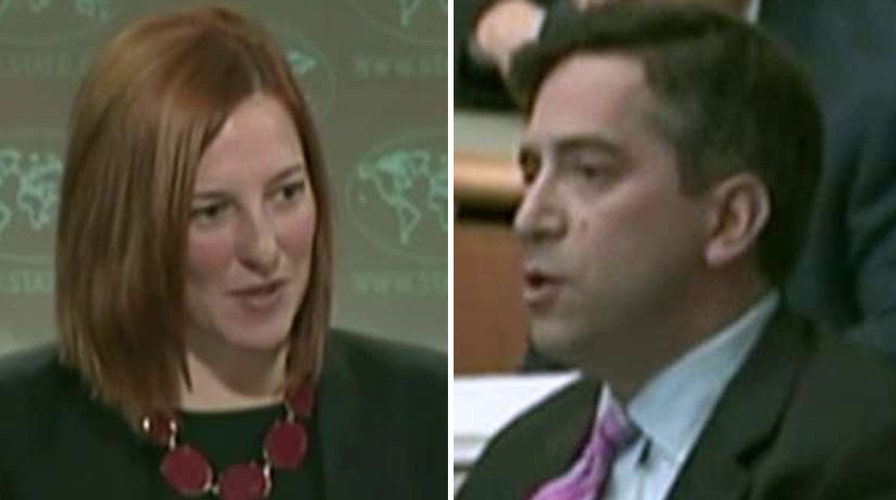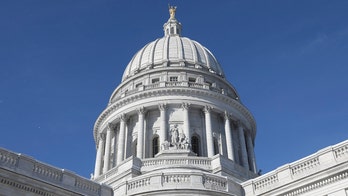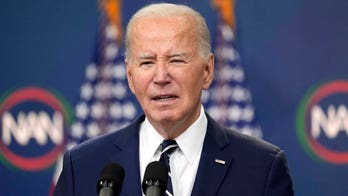State Dept. admits to deleting parts of Iran deal briefing
Exchange between Fox News' James Rosen then-spokeswoman Jen Psaki removed
The State Department announced Thursday, after a weeks-long review involving dozens of interviews, that it still does not know why several minutes of footage from a 2013 briefing were deleted from a public archive – leaving the department’s top spokesman on the defensive over the unusual incident.
“There’s no evidence to suggest [the edit] was made with the intent to conceal information from the public,” spokesman John Kirby said Thursday.
At the same time, he said they couldn’t rule out “nefarious” intent – but said the results of an extensive review were “inconclusive.”
The vague comments came as he announced the results of a “fact-finding review” into the deletion which apparently included interviews with more than 30 current and former employees and a review of emails and other documents.
The matter flared up more than two months ago when Kirby publicly acknowledged that an official had intentionally deleted video footage from a 2013 press briefing, where a former spokeswoman seemed to acknowledge misleading the press over the Iran nuclear deal.
“There was a deliberate request [to delete the footage] – this wasn’t a technical glitch,” Kirby said in June.
On Thursday, Kirby stood by the assessment that this was a deliberate edit, but couldn’t say why it was done.
“We may never know,” Kirby said, as he addressed tough questions from reporters.
At the 2013 briefing in question, then-spokeswoman Jen Psaki was asked by Fox News’ James Rosen about an earlier claim that no direct, secret talks were underway between the U.S. and Iran – when, in fact, they were.
Psaki at the time seemed to admit the discrepancy, saying: “There are times where diplomacy needs privacy in order to progress. This is a good example of that.”
However, Fox News later discovered the Psaki exchange was missing from the department’s official website and its YouTube channel (though not from the transcript). Eight minutes from the briefing, including the comments on the Iran deal, were edited out and replaced with a white-flash effect.
The State Department report concluded that the effect was "evidence of deliberate editing," but added that it had "not found any evidence to support a conclusion that the video was edited to hide any content."
Kirby on Thursday reviewed what they know and don’t know. The spokesman reiterated that a technician came forward and acknowledged getting a phone call requesting the edit, and then making it.
However, Kirby said they can’t conclude who placed that call or why. Further, he said additional details call into question the suggestion this was done to conceal – including that the full transcript was always online, and that the video was seemingly shortened early on, even before the technician remembers getting the request. Kirby said it’s possible the white-flash effect was inserted because the video had lost footage due to technical problems.
“I understand these results may not be completely satisfying to everyone,” he said.
This may not be the last word on the matter. Judicial Watch, a conservative advocacy group, filed suit this week seeking all records regarding the video footage and its deletion.





